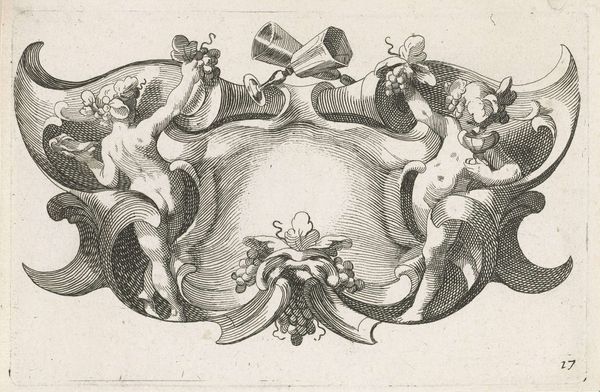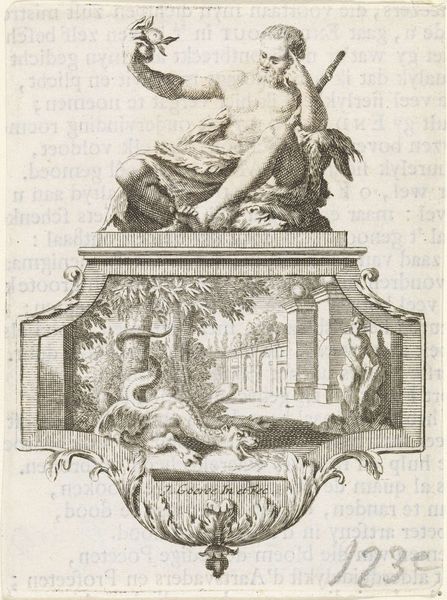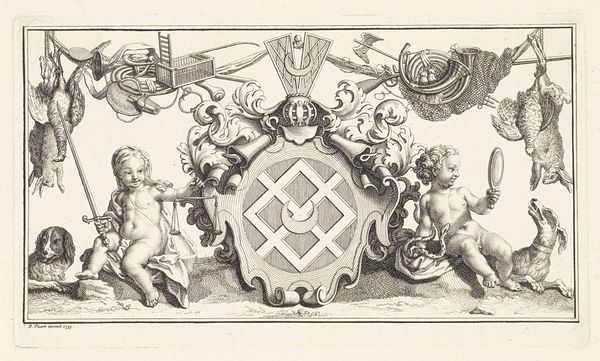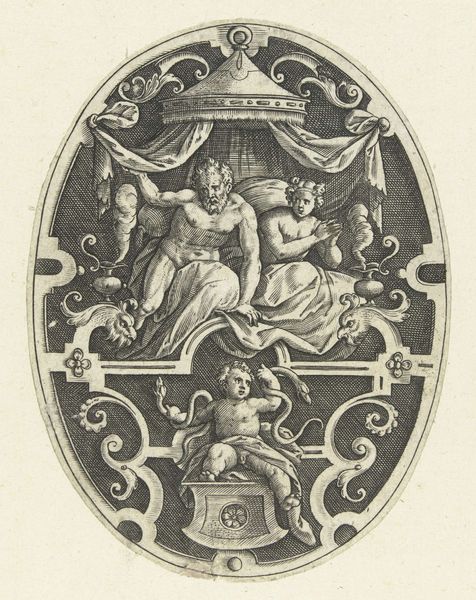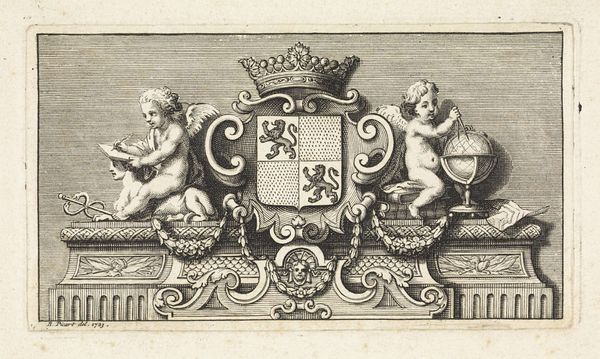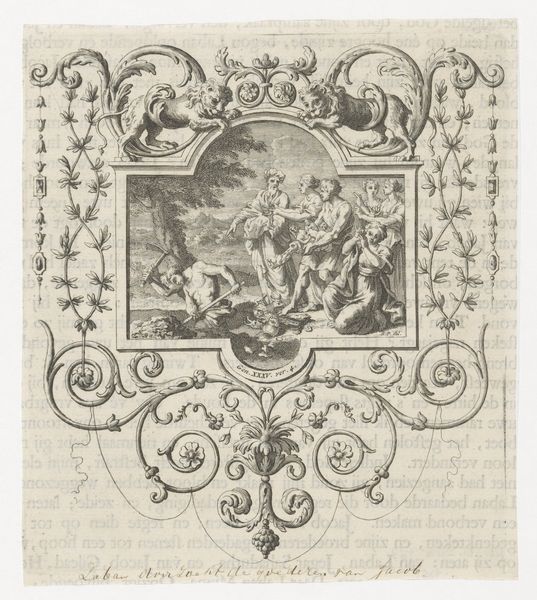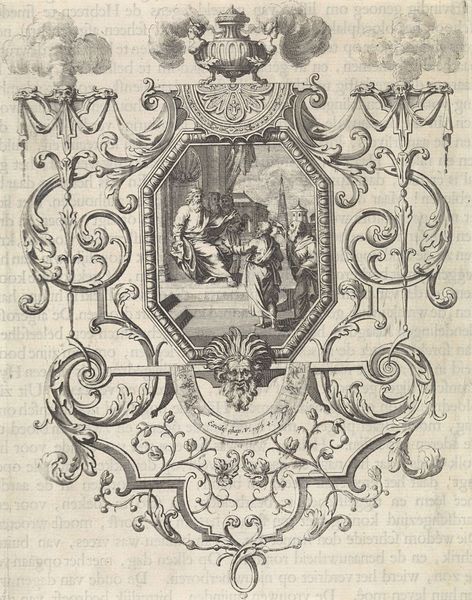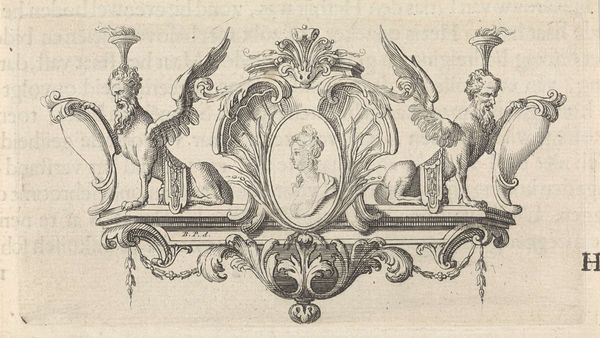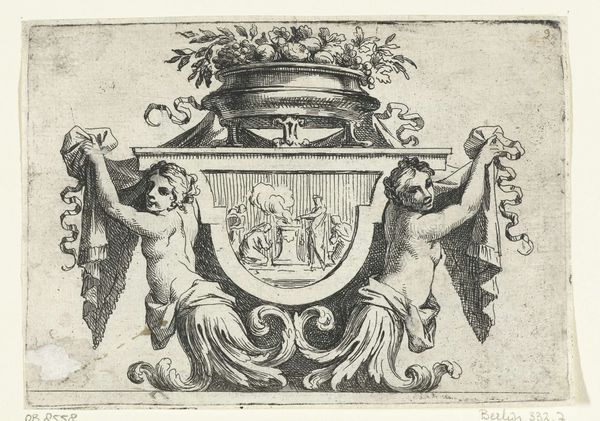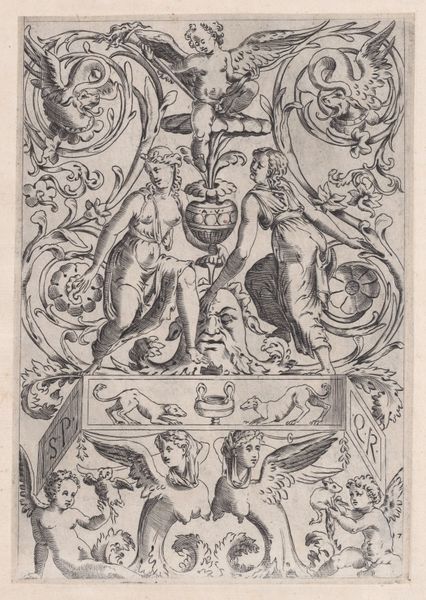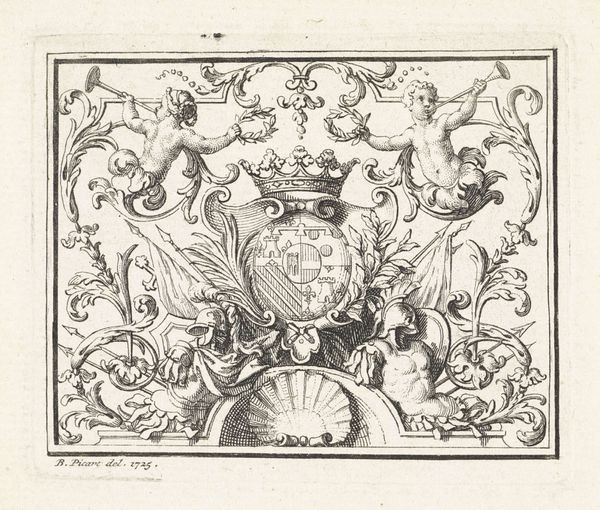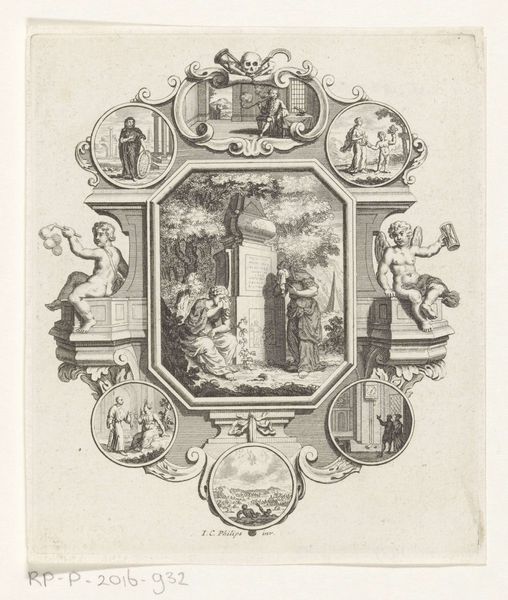
drawing, print, ink, engraving
#
portrait
#
drawing
#
allegory
#
baroque
# print
#
pen sketch
#
old engraving style
#
figuration
#
ink
#
engraving
Dimensions: width 151 mm, height 110 mm
Copyright: Rijks Museum: Open Domain
Curator: Look, doesn't this engraving just hum with the strangeness of a half-remembered dream? All those curious figures! Editor: Indeed. This intriguing allegorical print, titled "Embleem: Judas," comes to us from Jan Goeree, dating back to 1723. It is held here at the Rijksmuseum. Let us begin a journey into the intricate visual elements before us. Curator: Tell me about it, what do your "intricate visual elements" say? It reminds me of the hidden imagery in medieval illuminated manuscripts – everything seems to mean something more, lurking beneath the surface. A kind of visual code, do you think? Editor: I agree, it invites deeper examination through careful compositional arrangement and emblematic representations. Notice the ornate Baroque frame that encases a portrait and a symbolic scene? Curator: And perched up top are these rather solemn figures holding up what appear to be, well, shiny medallions of some kind? It feels theatrical. Editor: Precisely! Those are illustrative exemplars, framing a medallion of Pope Alexander the 8th; each figure representing wisdom, perhaps or maybe virtue – while at the bottom a vignette plays out exploring the consequences of betrayal, doesn't it? Curator: Oh! The scene below has a seated male figure with some very sad-looking…is that a dog? All a bit forlorn. And is that 'Proditio' inscribed above the vignette? That’s definitely "betrayal" in Latin, right? Dark. I am feeling less 'half-remembered dream' and more straight up nightmare now... Editor: It is compelling isn’t it? Goeree uses line and form meticulously to represent moral themes, prompting contemplation of religious dogma through allegory and classicism. The contrast between the central medallion and these figures enhances a thematic interplay. Curator: Well, it is beautiful. Its darkness doesn’t keep me from feeling compelled to look closer, to decode what Jan Goeree intended back in 1723. It makes you wonder, doesn't it, about the things that haunt us still today. Editor: In essence, this work serves as a poignant memento mori. Each element, from the portraits to the vignettes, meticulously intertwines, forging a dialogue about moral judgments and the inescapable shadows that humanity must wrestle with across time.
Comments
No comments
Be the first to comment and join the conversation on the ultimate creative platform.
